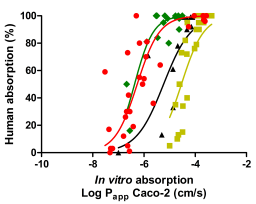Non-animal approaches for toxicokinetics in risk evaluations of food chemicals
Main Article Content
Abstract
The objective of the present work was to review the availability and predictive value of non-animal toxicokinetic approaches and to evaluate their current use in European risk evaluations of food contaminants, additives and food contact materials, as well as pesticides and medicines. Results revealed little use of quantitative animal or human kinetic data in risk evaluations of food chemicals, compared with pesticides and medicines. Risk evaluations of medicines provided sufficient in vivo kinetic data from different species to evaluate the predictive value of animal kinetic data for humans. These data showed a relatively poor correlation between the in vivo bioavailability in rats and dogs versus that in humans. In contrast, in vitro (human) kinetic data have been demonstrated to provide adequate predictions of the fate of compounds in humans, using appropriate in vitro-in vivo scalers and by integration of in vitro kinetic data with in silico kinetic modelling. Even though in vitro kinetic data were found to be occasionally included within risk evaluations of food chemicals, particularly results from Caco-2 absorption experiments and in vitro data on gut-microbial conversions, only minor use of in vitro methods for metabolism and quantitative in vitro-in vivo extrapolation methods was identified. Yet, such quantitative predictions are essential in the development of alternatives to animal testing as well as to increase human relevance of toxicological risk evaluations. Future research should aim at further improving and validating quantitative alternative methods for kinetics, thereby increasing regulatory acceptance of non-animal kinetic data.
Article Details
Articles are distributed under the terms of the Creative Commons Attribution 4.0 International license (http://creativecommons.org/licenses/by/4.0/), which permits unrestricted use, distribution and reproduction in any medium, provided the original work is appropriately cited (CC-BY). Copyright on any article in ALTEX is retained by the author(s).


